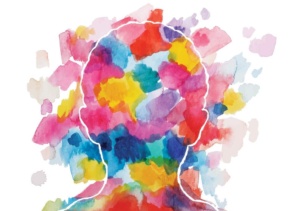
Mental Illness – Eliminating the Confusion
“I feel so sad; I think I may have depression” – have you (or a loved one) ever felt this way?

The ambiguity the surrounds mental illness is a problem that many societies face, especially ones where seeking mental health support could be seen as a taboo or a sign of weakness. It is extremely important to draw the line between the different psychological states such as sadness and depression, stress and anxiety, fear and PTSD… and so on.
The American Psychiatry Association defines mental illnesses as “health conditions involving changes in thinking, emotion or behavior (or a combination of these). Mental illnesses are associated with distress and problems functioning in social, work or family activities.” So, what then can be our first indicator that someone may be experiencing mental illness?
Many mental health professionals would argue that impaired functioning, as the definition suggests, is often the most prevalent sign.
WHAT CAUSES MENTAL ILLNESS?
In many cases, the exact cause of the mental illness may not be very clear. However, the research indicates that mental illness can be caused by one (or mostly a combination) of the below:
- Genetics (family history and predispositions)
- Biology (imbalance in the brain chemistry)
- Psychological trauma (such as war, abuse, loss…etc.)
- Environmental stressors (such as divorce, major transitions, dysfunctional family patterns…etc.)
IS MENTAL ILLNESS ‘CURABLE’ ?
Rather than using the term curable, mental health professionals use words like “treatable” and “manageable” when referring to recovery. Those words suggest an ongoing process of conscious reflection and an increased sense of awareness and control over the symptoms and triggers of mental illness. This is not to discourage people from seeking mental health support, instead, it is meant to increase the understanding of mental illness and its nature.
During treatment, individuals suffering from mental illness may need different levels of care. Those levels lie within a continuum that includes highest level of care, such as inpatient units, to lower and less intensive ones such as psychiatric and psychological clinics. Depending on the pervasiveness of the condition and the severity of the symptoms, the mental health professional will be able to decide on which level of care would address the client’s needs.
When receiving treatment for mental illness, it is important to keep in mind the different roles of medication vs. psychotherapy. While medication might sometimes be necessary to restore the imbalance within the brain chemistry, it will not always facilitate for the processing of overwhelming feelings, memories or stressors. In order to integrate experiences and increase someone’s ability to use his/her internal strengths to more adaptively cope, it is often a good idea to pair psychotherapy with medication.

A FINAL TIP
For years, terms like “schizophrenics”, “psychotics”, “addicts” have been used to describe individuals with mental illness. The issue with this type of language is that it views the mental illness as a descriptive label, rather than an experience. This disregards other aspects of the person’s identity and increases the stigma associated with such illnesses. Therefore, instead of “schizophrenic”, we could say “a person with schizophrenia”, “a person with psychosis”, “a person with addiction” … and so on.
There is a pressing need to change the language surrounding mental illness, and shift towards a more humane and mindful one. Begin with reflecting on your own language, and then educate others that surround you. We are all agents of change.
Helpful resources:
https://www.psychiatry.org/
https://www.psychologytoday.com/us
http://www.who.int/mental_health/en/ATIC.




